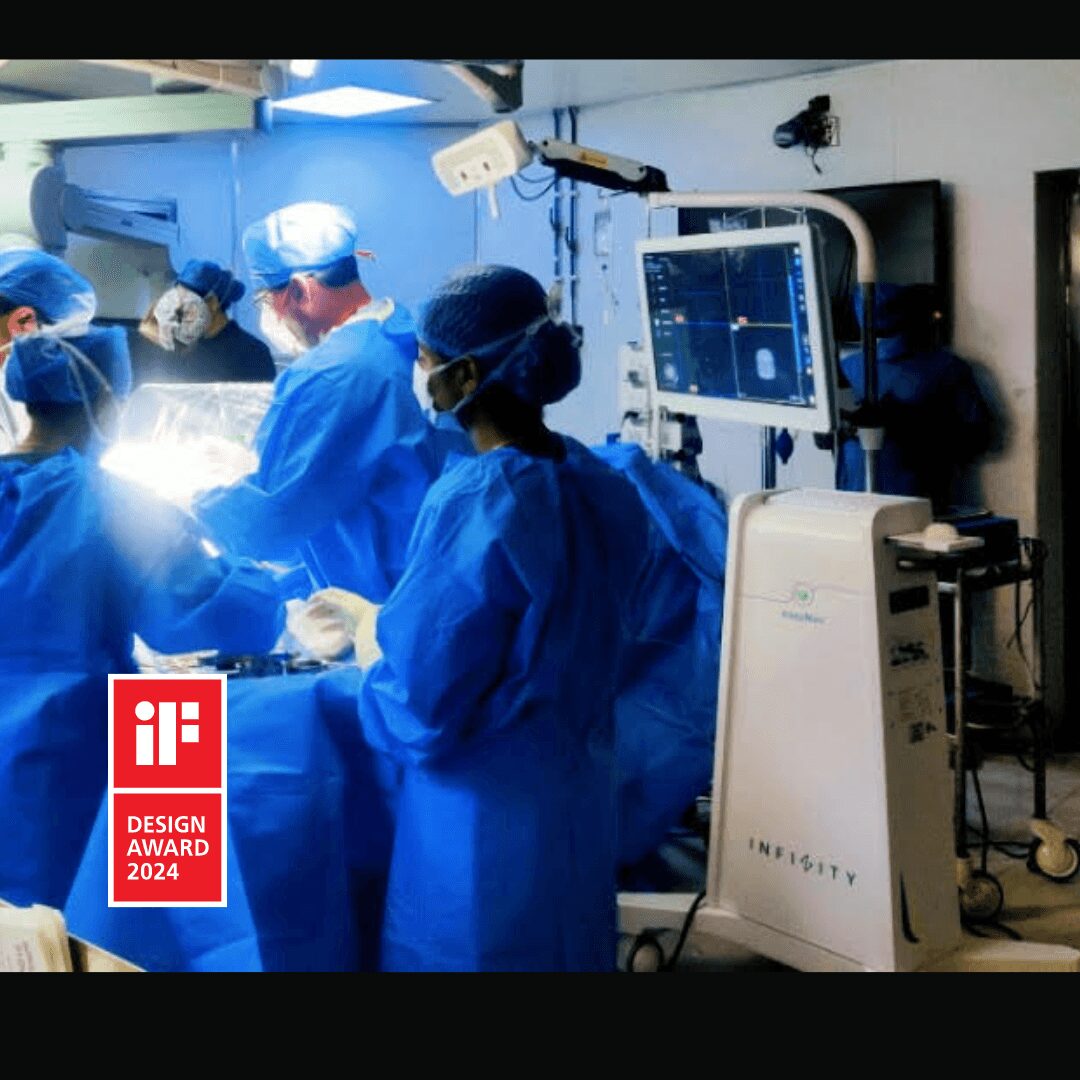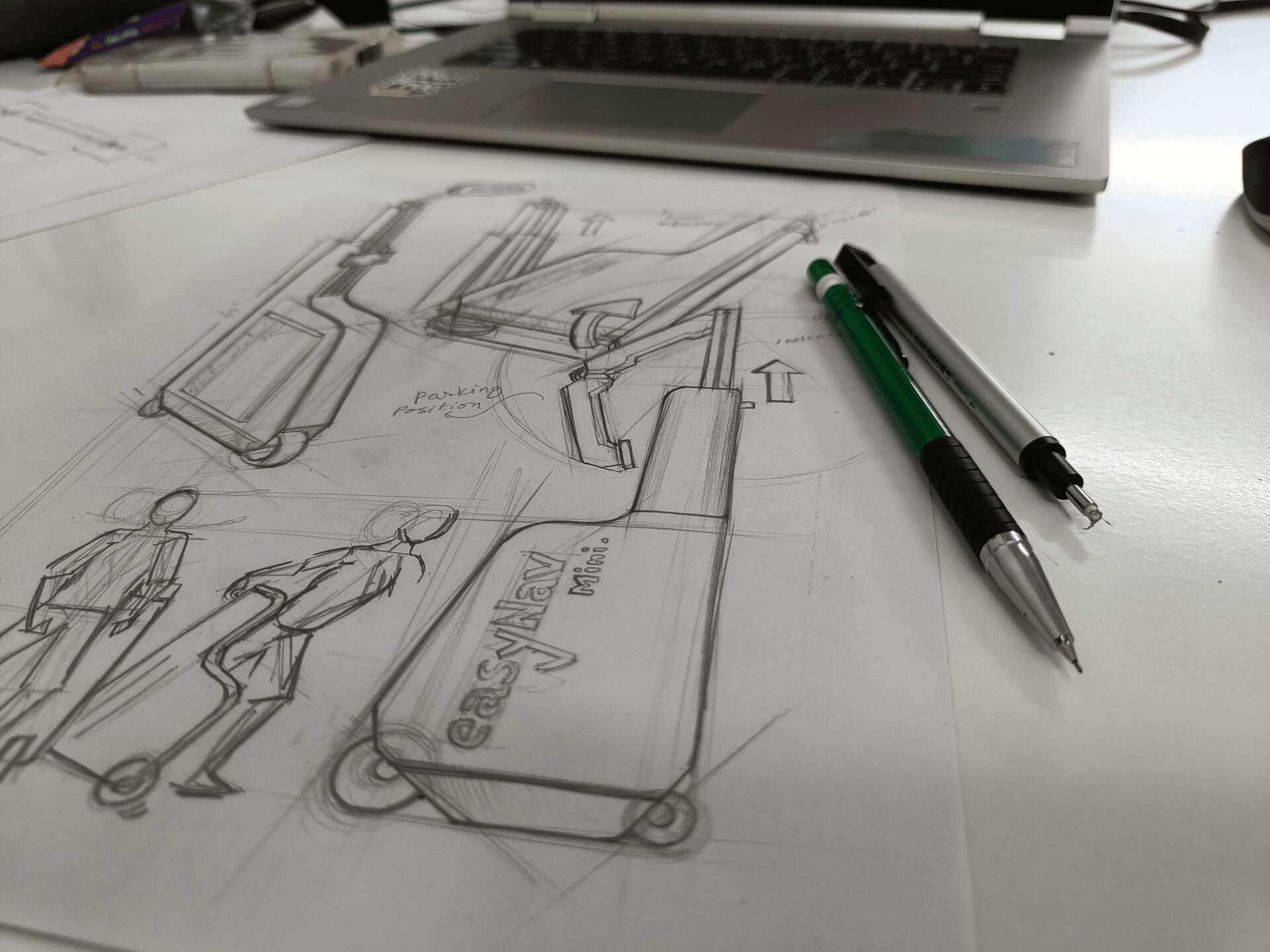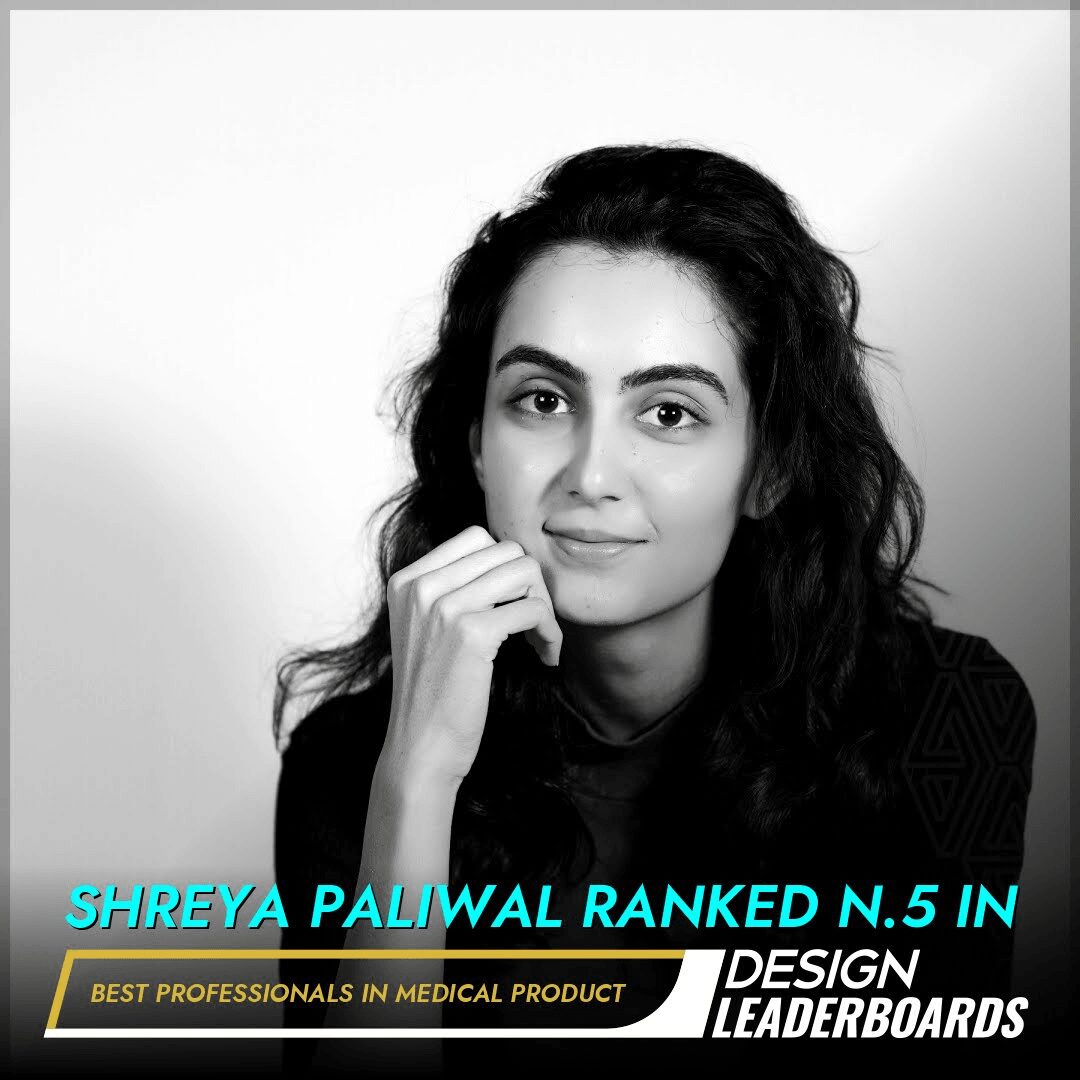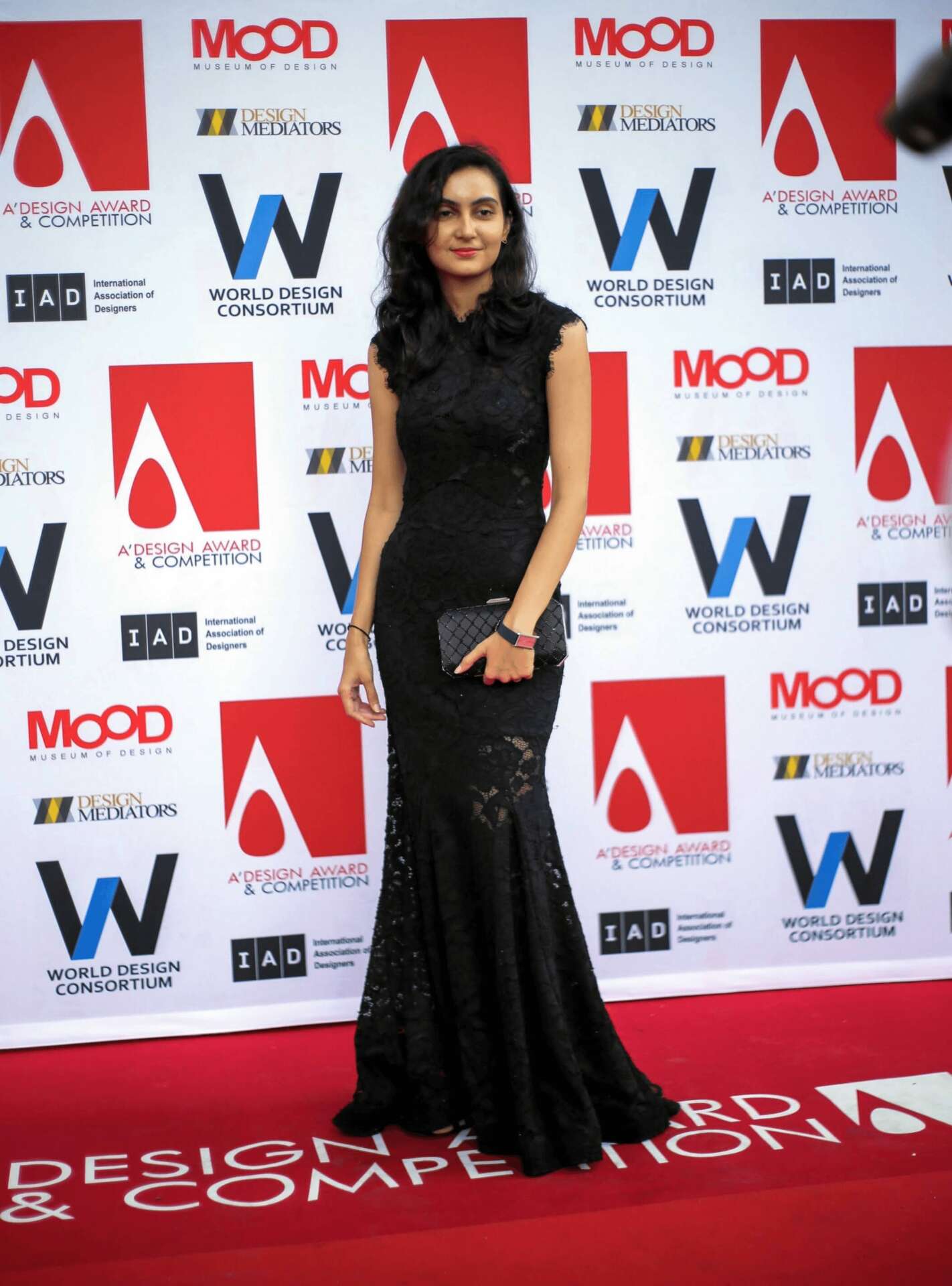We’re excited to introduce you to the always interesting and insightful Shreya Paliwal. We hope you’ll enjoy our conversation with Shreya below.
Alright, Shreya thanks for taking the time to share your stories and insights with us today. We’d love to hear about a project that you’ve worked on that’s meant a lot to you.
The Backstory and Context
As a Product Experience Designer at Happy Reliable Surgeries Pvt. Ltd., a Bengaluru-based firm specializing in image-guided surgical navigation solutions, I had the opportunity to work on a truly challenging and innovative project—designing the Infinity. This project, which has won two reputed international design awards within two years, stands out as the most meaningful to me due to its unique blend of technical complexity, creative demands, significant market impact, and my background of growing up in a family of doctors.
The medical device market is replete with products designed using plastics to achieve intricate curves and forms that appeal to users and provide comfort to patients. However, for the Infinity project, we set out to create a unique form factor using only sheet metal and subsequent processes. The goal was to balance aesthetic appeal, functionality, manufacturability, and cost-effectiveness, despite the challenges posed by low-volume production.
Spearheading the Project to Completion
I spearheaded the Infinity project from its inception as part of my undergraduate thesis, which eventually led to a full-time opportunity at Happy Reliable Surgeries Pvt. Ltd. This transition from academic project to professional endeavor was both challenging and rewarding, laying the foundation for my career in the healthcare design industry. I was entrusted with the responsibility of leading the project to completion, overseeing every aspect from initial design to final production.
The Design Challenge
The primary challenge was to design a product that not only met high standards of quality and functionality but also stood out in a market dominated by plastic designs. This required a deep understanding of sheet metal properties, manufacturing processes, and cost constraints. The project demanded innovative thinking and problem-solving skills to create a form language that was both unique and optimized for manufacturing.
Personal Journey and Inspiration
I always knew I had a knack for a creative career, but coming from a town in India where design is seldom heard about and is usually related to fashion design, I was uncertain about what a designer truly does. Very few people in my hometown understood the breadth and depth of the design profession—many probably still don’t. Despite this, I had a deep-seated interest in a creative career but lacked clarity on what path to take. Thankfully, I had well-informed people around me who advised me to pursue design academically.
Growing up in a family of doctors, I was profoundly influenced by their dedication to healthcare. Observing their commitment to improving patients’ lives inspired me to combine my creative talents with a desire to contribute meaningfully to the medical field. This background was instrumental in my decision to focus on designing solutions that improve healthcare outcomes, which ultimately led me to this project.
The Process and Personal Growth
Throughout the project, I collaborated with industry mentors and relied on my background in Industrial Design. The design process involved several iterations and extensive testing to ensure that the product was both aesthetically pleasing and functionally superior. The experience was filled with numerous setbacks and challenges, which provided invaluable learning opportunities.
Designing Infinity pushed me to expand my knowledge and skills, particularly in areas I had not extensively explored before. This project required a multidisciplinary approach, blending elements of industrial design, engineering, and manufacturing. My growth within the company was significant; starting as an Industrial Designer, I evolved into an integral part of the team, overseeing design decisions for the brand.
Major Healthcare Side Projects
In addition to the Infinity project, I was involved in several major healthcare side projects within the UI/UX and Product Design departments. These projects further honed my skills and broadened my understanding of the healthcare industry’s needs and challenges. My contributions to these projects included:
UI/UX Design for Surgical Navigation Systems: Enhancing the user experience for surgeons using our navigation solutions.
Product Design for Medical Instruments: Innovating ergonomic and functional designs for various medical tools.
Collaborative Development: Working closely with healthcare professionals to ensure our designs met real-world needs and improved patient outcomes.
R&D on Medical Technologies: Engaging in research and development of advanced medical technologies, particularly focusing on biocompatible materials for 3D printing, which have significant implications for medical solutions.
Surgical Implications Using Navigation: Leading product design projects that involved developing surgical instruments and tools optimized for use with our navigation systems, enhancing precision and outcomes in surgical procedures.
Success and Impact
Technical Complexity: Overcoming challenges with sheet metal design was a significant technical achievement.
Creative Fulfillment: Designing a product that stands out in a crowded market while ensuring it meets high standards of quality and functionality was immensely satisfying.
Impact: The success of Infinity highlighted the potential for innovation within constraints, offering a competitive market edge.
Recognition: Infinity won two prestigious international design awards within two years, showcasing its excellence in design and functionality.
Market Acceptance: The product received widespread customer appreciation and was successfully adopted by India’s reputed hospital chains, enhancing its credibility and market presence.
Personal and Professional Growth: The project reinforced my belief in proactive compassion and purposeful design, solidifying my role within the company.
Conclusion
Designing Infinity was a landmark project in my career, encapsulating the essence of what design means to me—proactive compassion, the search for purpose, and the continual pursuit of knowledge and improvement. It demonstrated the power of innovative thinking and the impact of thoughtful design in improving lives and advancing industries. The project’s success, marked by international accolades and market acceptance has humbled me for life.

Shreya, before we move on to more of these sorts of questions, can you take some time to bring our readers up to speed on you and what you do?
Hello, I’m Shreya Paliwal, a graduate student based in New York, specializing in Product Experience Design. My journey into the design industry began during my undergraduate studies, where I was fascinated by the intersection of creativity and technology. Growing up in a family of doctors, I was inspired by their dedication to improving patients’ lives, which led me to focus on designing solutions that make a meaningful impact in healthcare.
How I Got Into the Industry
My interest in design started with a deep-seated passion for creative careers. Coming from a town where design is often misunderstood, I initially struggled to find clarity on the right path. My undergraduate thesis on sheet metal design for medical devices opened doors to opportunities and led me to my current focus on Strategic Design while also crafting Products and Experiences for clients.
The Work I Do
I use strategic design thinking to solve creative design challenges with an innovative approach, leading to business solutions.
Problems I Solve for Clients
I help clients find clarity by conducting strategic design workshops and interacting with stakeholders to understand their requirements. My services include industrial design, guiding projects from the initial idea through to execution, ensuring that the final product meets both user needs and business objectives.
What Sets Me Apart
What sets me apart is my multidisciplinary but also strategic approach, blending industrial design, engineering, and user experience. My dedication to purposeful design and proactive compassion drives me to continually seek innovative ways to improve lives through thoughtful design.
Achievements and Pride
My work has been recognized for its innovation and impact on healthcare, and I continue to strive for excellence in all my projects. This commitment to proactive compassion and purposeful design is what drives me every day.

Can you share a story from your journey that illustrates your resilience?
I recall working on a particularly challenging project that involved significant technical complexities in both manufacturability and design. This was a healthcare product, and the impact of every design decision was enormous. For three consecutive years, the project faced numerous setbacks and obstacles, testing my patience and perseverance.
Despite the challenges, I remained steadfast in my belief that we would ultimately succeed. One critical challenge seemed almost insurmountable, with no clear solution in sight. Recognizing the gravity of the situation, I reached out to surgeons and asked relevant questions to gain a deeper insight into the use case for that particular scenario. I carefully listened to their insights and concerns, which helped me identify potential opportunities for progress.
Through this discussion, I was able to come up with a satisfactory solution. As I always say, solutions emerge out of clarity in defining the problem. This experience reinforced the importance of resilience and collaboration in overcoming obstacles. It demonstrated that even the most daunting challenges could be addressed with persistence and gaining clarity of the problem.

What’s a lesson you had to unlearn and what’s the backstory?
One significant lesson I had to unlearn is the idea that good design is all about putting in more effort. Early in my career, I believed that the more effort I invested, often in ways that weren’t visible to others, the better the design would be. I would spend countless hours perfecting every detail, thinking that this invisible labor would inherently lead to superior outcomes.
However, through various projects and experiences, I realized that this approach was not sustainable or necessarily effective. One particular project, which involved significant technical complexities and client requirements, made this clear. Despite all my efforts, the project faced numerous setbacks and challenges.
The turning point came when I started focusing on efficiently understanding the needs and requirements of the project. I engaged more with stakeholders, asked relevant questions, and streamlined my processes. This shift in approach taught me that good design is not just about effort but about working smartly and efficiently. It’s about producing quality work within the given timeframe and ensuring that the clients’ needs are met.
This experience helped me unlearn the notion that more effort equals better design. Instead, I learned that clarity, efficient problem-solving, and understanding the client’s needs are the true keys to successful design.
Contact Info:
- Website: https://www.shreyapaliwaldesigns.com/
- Instagram: https://www.instagram.com/the_shreyapaliwaldesigns_2.0/
- Linkedin: https://www.linkedin.com/in/shreyapaliwal



Image Credits
A’ Design Award


